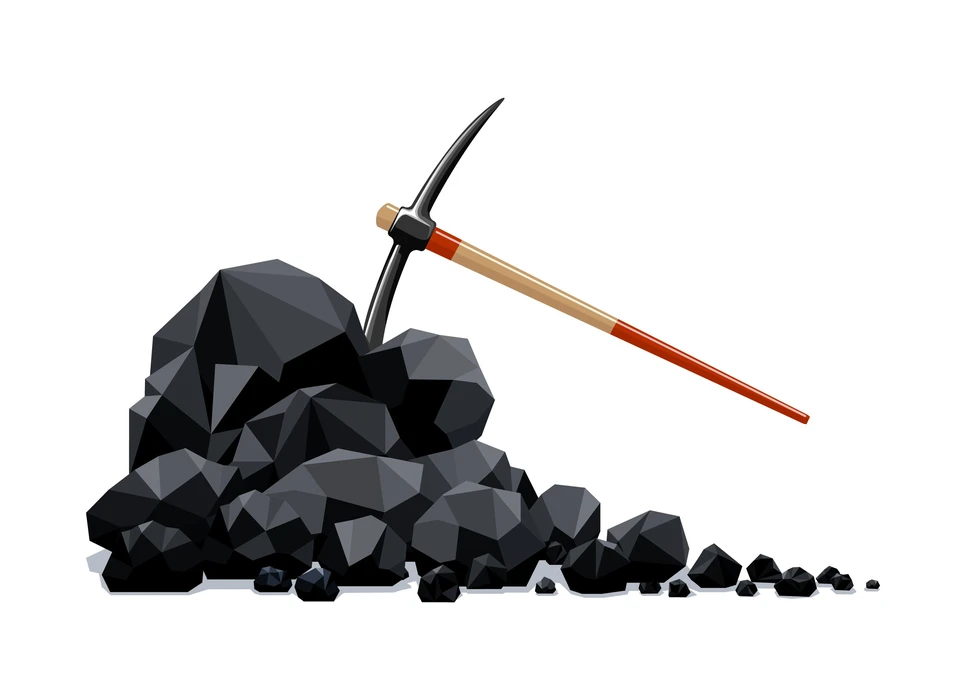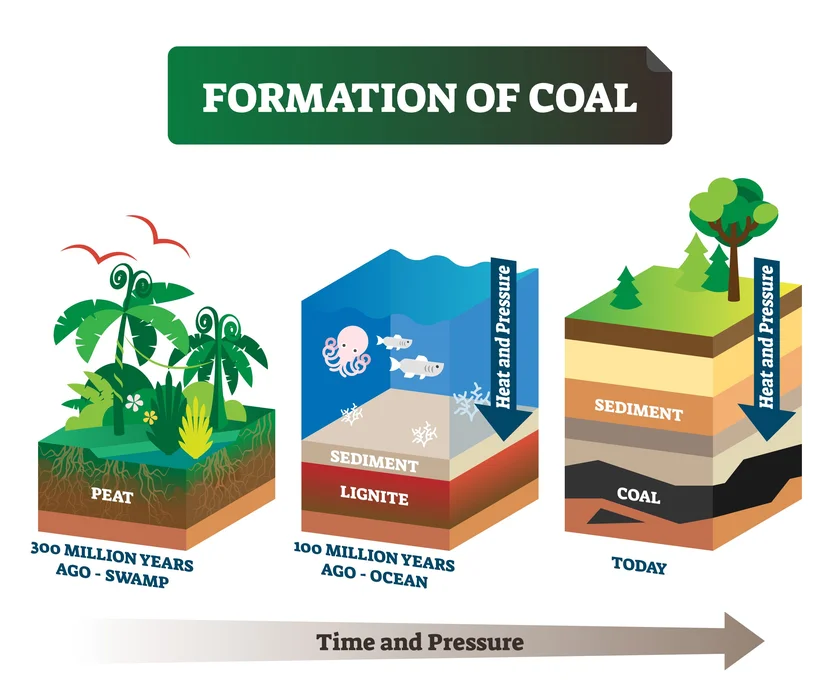Introduction
Coal appears to be a dense carbon-rich substance that is brown/black and formed in layered sedimentary rock. This is one of the most important major fossil fuels. It is said to contain half of the total carbon-containing substance by weight generated by the compression and stiffening of modified plant residues, primarily peat settlements. Because of differences in plant matter, the extent of coalification, and the impurity spectrum, there are many types of coal. French explorers and fur traders discovered North American coal seams near the coast of Grand Lake in southern New Brunswick, Canada, in the 1600s. Coal deposits were discovered wherever rivers flowed deeper into the lake, but they were also excavated by hand from the surface, and caves cut into the rock. Coal is not the most abundant fossil fuel, but it has the longest history.

What do you understand by coal?
Coal appears to be a shiny black rock. Coal contains a tremendous amount of energy. When coal is burned, it emits both heat and light energy. The cave dwellers used coal for warmth, but ultimately for cooking. It could have been very simple to burn because it worked better than wood and did not need to be retrieved as frequently. People began using coal to heat their homes in the 1800s. Coal was used as a fuel source for both trains and ships. Nowadays, coal is primarily used to generate electricity. The four primary types or grades of coal are peat, anthracite, lignite, and bituminous coal.
What is the Coal Story?
As they died, the plants sank to the bottom of the wetlands. Throughout the years, excessive amounts of vegetation have been coated in dirt and water. They had been compressed by the weight. The heat and pressure eventually converted these plants into coal. Because coal is produced by plants, and plants obtain their energy from the sun, the power in coal is also derived from the sun. Coal, as we know it today, formed over millions of years. We can’t even produce that much in such a short amount of time. This is why coal is considered non-renewable.

How is Coal Obtained
- This is derived from beneath deposits that are either ores coatings or are large enough to be extracted profitably.
- Mining could be done in one of two ways: underground or open pit. The type of extraction is determined by the overall depth of such a deposit.
- Vertical tunnels are used to access resources, whereas surface and open-pit mining remove dirt and rocks on top of mineral reserves.
- Surface mining costs less than underground mining. As a result, surface mining is much more common.
Also Read: Coal Formation Stages
Uses of Coal
- Coal is now used not only as a cooking fuel but also as a heat source, particularly in cold climates and developing countries. This provides a much cheaper method of cooking as well as heat production in areas where liquified petroleum gas and Biogas are not available.
- It is frequently used as a basic component in the production of everyday commodities such as steel and iron. Coal has been used indirectly to produce steel in the steel industry.
- It is used in a variety of industries to manufacture a wide range of products. Coal is used in a variety of industries, including cement production, paper manufacturing, chemical manufacturing, and pharmaceutical manufacturing. Coal is used by the chemical industry to produce a variety of raw materials such as benzol and sulphate of sodium.
- Coal is used to make carbon fibre. It is the strongest and lightest element available for making stabilisers, sports equipment, and even mountain motorcycles.
- It aids in the development of alumina mills.
- Likewise, it could have been converted into gas or liquid, which could have been used to power vehicles such as automobiles, motorcycles, and ships.
- Furthermore, it is primarily used as fuel in the combustion process to generate energy. Thermal coal is frequently used to generate energy in power plants.
- Activated carbon is made from coal. Activated carbon is used in air and water purification filters, as well as renal dialysis technology.
- Activated charcoal has been used in the production of cosmetics and facial treatments.
Summary
Coal, a carbon-rich substance that is usually black or brown, is found in multilayered rock deposits. This is one of the most important fossil fuels and can be found all over the world. For thousands of years, heat, and pressure on flora accumulated in old swampy wetlands have produced coal. Its volume, thickness, rigidity, and density all vary. It is constantly used as a fuel, an ash source, and a producer of various chemicals used in the synthesis of dyes, lubricants, and pharmaceuticals. Exploration for alternative energy sources has occasionally refocused attention on the processing of coal into liquid fuels; coal liquefaction methods were also recognised in the early twentieth century.
Frequently Asked Questions
1. What is coal’s environmental impact?
Ans. Particulate pollutants, ozone in the earth’s crust, acid rain, and smog are all environmental drawbacks of using coal as a source of energy. Fly ash granules are released into the atmosphere after coal is burned with fuel oil, causing air pollution problems.
2. What exactly is the coal formula?
Ans. The four types of coal are anthracite, bituminous, sub-bituminous, and lignite. The chemical investigation yields an empirical formula for bituminous coal, such as \({C_{137}}{H_{97}}{O_9}NS\), as well as anthracite, \({C_{240}}{H_{90}}{O_4}NS\).
3. What contaminants are present in coal?
Ans. Impurities such as sulphur and nitrogen have been discovered in coal. When coal burns, such pollutants are emitted into the atmosphere.
 Mission Statement
Mission Statement
“Empower every student to achieve full potential”
88Guru has been established with the social objective of making quality video-based learning material available to all Indian students. Technology, Connectivity and Social Media are rapidly changing the world of Education and we wish to lead the transformation of the tuition industry in India.
88Guru is the perfect complement to the current tuition model. 88Guru creates a wonderful opportunity for children and parents to bond while engaging in a valuable learning activity. It also provides the complete curriculum at your fingertips for those moments when you need some help at short notice. We believe that this mode of tuition could be transformational, adding hours to a child's day while providing complete control over the learning process.
Every course is taught by the best teachers from India's top schools and conducted in an engaging manner to keep students involved. The e-learning process consists of video-based instructions, computer-graded assignments, and a dashboard which allows the student and parent to track progress.


